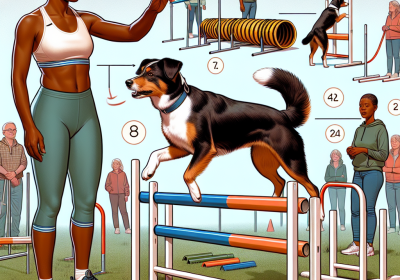Equipment Needed for Canine Freework
Table of Contents
- Essential Tools for Canine Freework Training
- Must-Have Equipment for Safe Canine Freework
- Budget-Friendly Gear for Canine Freework Enthusiasts
Canine Freework is an engaging and enriching activity designed to stimulate a dog’s physical and mental faculties through a variety of exercises and challenges. To effectively participate in Canine Freework, certain equipment is essential to ensure the safety, enjoyment, and success of both the dog and the handler. Key equipment includes a sturdy harness and long line to allow freedom of movement while maintaining control, a variety of textured surfaces and objects to explore, such as mats, balance discs, and wobble boards, and sensory enrichment items like scent boxes and treat puzzles. Additionally, having a safe, enclosed space for the activities is crucial to provide a secure environment for the dog to explore and interact with the equipment. This combination of tools and materials helps create a dynamic and stimulating experience that promotes physical health, mental sharpness, and a stronger bond between the dog and its handler.
Essential Tools for Canine Freework Training
Canine freework is an innovative and engaging approach to dog training that emphasizes the importance of allowing dogs to explore their environment freely while engaging in various activities. This method not only enhances a dog’s physical and mental well-being but also strengthens the bond between the dog and its handler. To effectively implement canine freework, it is essential to have the right equipment. The following discussion outlines the essential tools required for successful canine freework training.
First and foremost, a well-fitted harness is crucial. Unlike traditional collars, a harness distributes pressure evenly across the dog’s body, reducing the risk of injury and providing greater control. When selecting a harness, it is important to choose one that is comfortable, durable, and adjustable to ensure a secure fit. Additionally, a long training lead, typically ranging from 10 to 30 feet, is necessary. This allows the dog to explore its surroundings while still being under the handler’s control. The length of the lead provides the dog with a sense of freedom, which is a fundamental aspect of freework training.
Moreover, interactive toys play a significant role in canine freework. These toys stimulate the dog’s mind and encourage problem-solving skills. Puzzle toys, treat-dispensing toys, and snuffle mats are excellent choices. Puzzle toys challenge the dog to figure out how to access hidden treats, while treat-dispensing toys reward the dog for manipulating the toy in specific ways. Snuffle mats, on the other hand, mimic the natural foraging behavior of dogs, allowing them to use their sense of smell to find hidden treats. These toys not only keep the dog engaged but also provide mental stimulation, which is essential for overall well-being.
In addition to interactive toys, agility equipment can be beneficial for canine freework. Items such as tunnels, weave poles, and jumps can be incorporated into training sessions to enhance the dog’s physical fitness and coordination. Agility equipment encourages the dog to navigate obstacles, which can improve balance and build confidence. It is important to introduce agility equipment gradually and ensure that the dog is comfortable with each obstacle before progressing to more complex setups.
Furthermore, scent work tools are invaluable for canine freework. Scent work involves training the dog to identify and locate specific scents, which can be both mentally stimulating and rewarding. Scent work kits, which typically include scent containers and target odors, are available for this purpose. These kits provide a structured way to introduce scent work to the dog and can be used to create various scent-based games and challenges.
Additionally, a variety of textured surfaces can be incorporated into freework training to provide sensory enrichment. Different surfaces, such as grass, gravel, sand, and rubber mats, offer unique tactile experiences for the dog. Walking on varied surfaces can enhance the dog’s proprioception, which is the awareness of body position and movement. This can be particularly beneficial for dogs recovering from injuries or those with mobility issues.
Lastly, it is important to have a selection of high-value treats on hand. Treats serve as positive reinforcement and motivate the dog to engage in freework activities. It is advisable to use small, soft treats that are easy to consume quickly, allowing for continuous training without interruptions.
In conclusion, canine freework training requires a range of essential tools to ensure a successful and enriching experience for both the dog and the handler. A well-fitted harness, a long training lead, interactive toys, agility equipment, scent work tools, textured surfaces, and high-value treats are all integral components of this training method. By utilizing these tools effectively, handlers can create a stimulating and rewarding environment that promotes the physical and mental well-being of their canine companions.
Must-Have Equipment for Safe Canine Freework
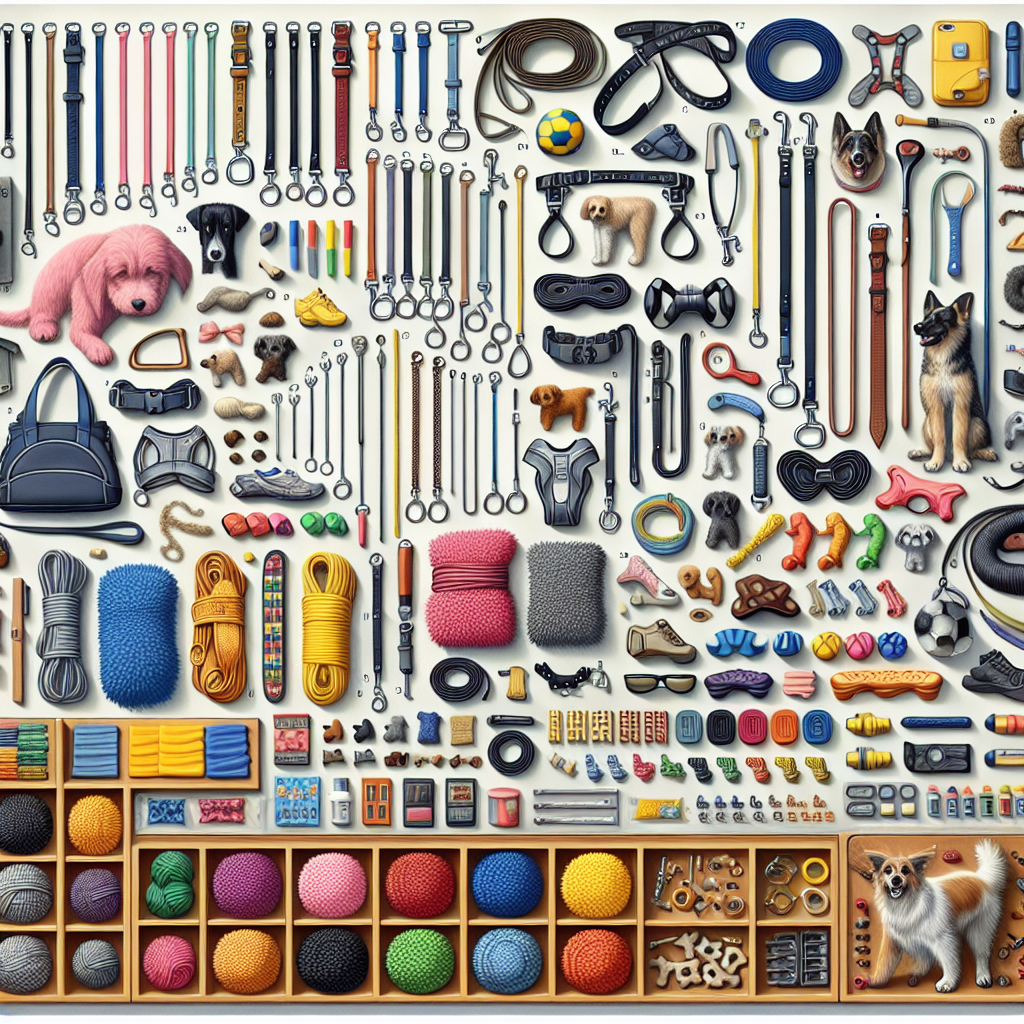
Canine freework, an innovative approach to dog training and enrichment, emphasizes the importance of allowing dogs to explore their environment freely while engaging in various activities. To ensure the safety and effectiveness of this practice, it is crucial to have the right equipment. The following discussion outlines the essential items needed for safe canine freework, providing a comprehensive guide for dog owners and trainers.
First and foremost, a well-fitted harness is indispensable. Unlike collars, harnesses distribute pressure evenly across a dog’s body, reducing the risk of injury to the neck and spine. When selecting a harness, it is important to choose one that is adjustable and made from durable materials. This ensures a secure fit and longevity, even with frequent use. Additionally, a harness with reflective strips can enhance visibility during low-light conditions, further contributing to the safety of the dog.
Equally important is a sturdy, reliable leash. While canine freework often involves off-leash activities, there are situations where a leash is necessary for control and safety. A leash made from high-quality materials, such as nylon or leather, provides the strength needed to handle sudden movements or pulls. Moreover, a leash with a comfortable handle can prevent hand strain during extended periods of use. For added versatility, a retractable leash can offer varying lengths, allowing for greater freedom of movement while maintaining control.
In addition to harnesses and leashes, a variety of interactive toys and tools are essential for engaging a dog’s senses and promoting mental stimulation. Puzzle toys, for instance, challenge a dog’s problem-solving abilities and can be filled with treats to encourage exploration. Similarly, scent-based toys can tap into a dog’s natural olfactory instincts, providing an enriching experience. It is important to select toys that are appropriate for the dog’s size and chewing habits to prevent choking hazards or ingestion of small parts.
Furthermore, portable barriers or playpens can be invaluable for creating safe, contained areas for freework activities. These barriers can be set up in various environments, such as parks or backyards, to provide a secure space where dogs can explore without the risk of running into dangerous areas. Playpens made from lightweight, foldable materials offer convenience and ease of transport, making them ideal for on-the-go use.
Another critical piece of equipment is a first aid kit specifically designed for dogs. Accidents can happen, and being prepared with a well-stocked first aid kit can make a significant difference in addressing minor injuries promptly. Items such as antiseptic wipes, bandages, and tweezers are essential components. Additionally, having a guide on basic canine first aid procedures can be extremely beneficial in emergency situations.
Lastly, proper footwear for the handler should not be overlooked. Engaging in canine freework often involves traversing various terrains, from grassy fields to rocky trails. Sturdy, comfortable shoes with good traction can prevent slips and falls, ensuring the handler can keep up with the dog safely.
In conclusion, the right equipment is fundamental to the success and safety of canine freework. By investing in a well-fitted harness, a reliable leash, interactive toys, portable barriers, a canine first aid kit, and appropriate footwear, dog owners and trainers can create a secure and enriching environment for their dogs. These tools not only enhance the freework experience but also contribute to the overall well-being and happiness of the canine participants.
Budget-Friendly Gear for Canine Freework Enthusiasts
Canine freework, an engaging and enriching activity for dogs, has gained popularity among pet owners who seek to provide their furry companions with mental stimulation and physical exercise. While the benefits of canine freework are well-documented, many enthusiasts are often concerned about the costs associated with acquiring the necessary equipment. Fortunately, there are budget-friendly options available that can help you get started without breaking the bank.
To begin with, one of the most essential pieces of equipment for canine freework is a sturdy and comfortable harness. A well-fitted harness ensures that your dog can move freely and safely during activities. While high-end harnesses can be quite expensive, there are many affordable options that offer both durability and comfort. Look for harnesses made from breathable materials with adjustable straps to ensure a snug fit. Additionally, some budget-friendly harnesses come with reflective strips, which can be particularly useful for evening or early morning sessions.
Another crucial item for canine freework is a long training lead. These leads allow your dog to explore their environment while still being under your control. Long leads come in various lengths and materials, and it is possible to find cost-effective options that do not compromise on quality. Nylon leads, for instance, are both durable and affordable. They are also lightweight, making them easy to handle during training sessions. When selecting a long lead, ensure that it has a secure clip to attach to your dog’s harness and that it is long enough to provide ample space for exploration.
In addition to harnesses and leads, interactive toys play a significant role in canine freework. These toys can be used to create stimulating environments that encourage your dog to use their senses and problem-solving skills. Puzzle toys, for example, are excellent for mental stimulation and can be found at various price points. Many budget-friendly puzzle toys are designed to hide treats, which motivates dogs to engage with the toy and figure out how to retrieve the reward. Similarly, scent-based toys can be an affordable way to tap into your dog’s natural instincts and keep them entertained.
Moreover, incorporating everyday household items into your canine freework routine can be a cost-effective way to enhance the experience. Items such as cardboard boxes, plastic bottles, and old towels can be repurposed to create obstacle courses or sensory challenges. For instance, you can hide treats inside a cardboard box and encourage your dog to find them, or you can use old towels to create a scent trail for your dog to follow. These simple yet effective tools can provide hours of entertainment and enrichment without requiring a significant financial investment.
Lastly, it is important to consider the environment in which you conduct your canine freework sessions. Public parks, open fields, and even your backyard can serve as excellent venues for freework activities. These locations offer diverse and stimulating environments that can enhance your dog’s experience. Utilizing public spaces not only saves money but also provides your dog with the opportunity to explore new surroundings and encounter different stimuli.
In conclusion, engaging in canine freework does not necessitate a substantial financial outlay. By selecting budget-friendly harnesses, leads, and interactive toys, and by creatively using household items and public spaces, you can provide your dog with a fulfilling and enriching experience. The key is to focus on the quality and functionality of the equipment rather than the price tag, ensuring that your dog remains safe, comfortable, and engaged throughout their freework activities.
Read more about Canine Freework
Equipment Needed for Canine Freework
– Essential Equipment for Canine Freework
– DIY Canine Freework Equipment
– Safety Measures for Canine Freework Equipment
– Different Brands and Options for Canine Freework Equipment
– How to Properly Use Canine Freework Equipment


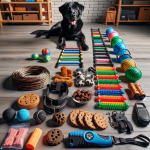
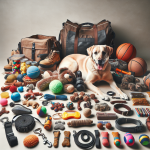
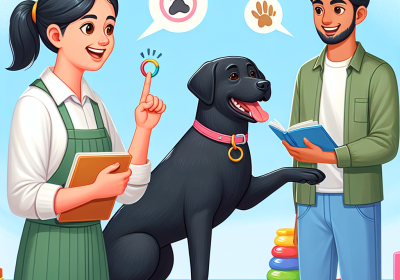
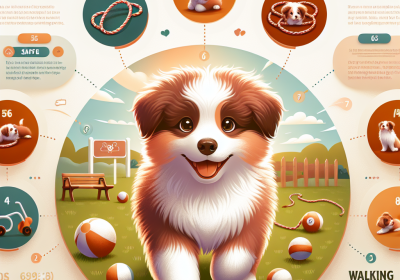
![The Dog Podcast Uncovers Startling Truths About What We Feed Our Dogs [Press Release]](https://contentsphere.com.au/wp-content/uploads/2024/08/canine-nutrition-ai-400x280.jpg)
